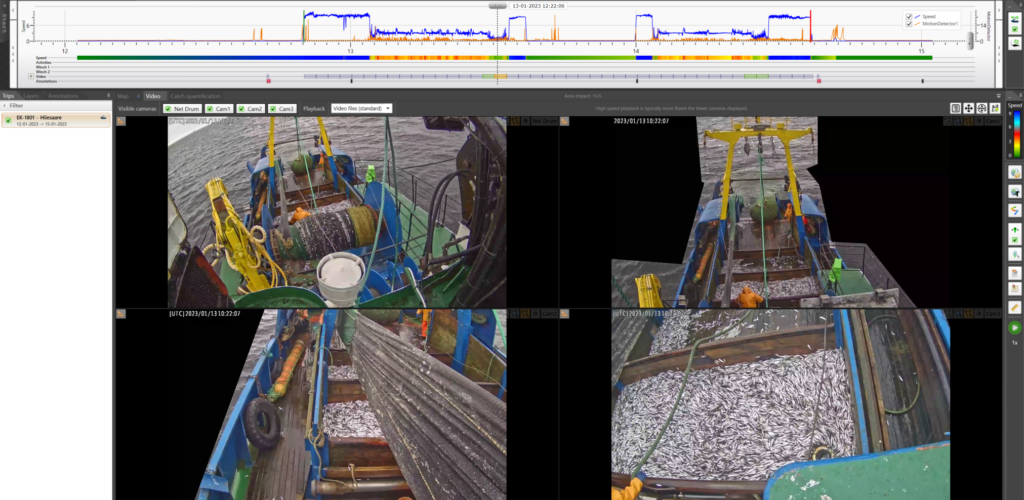Thanks to the pilot project, the Estonian Environmental Board will gain new knowledge about the advantages of remote electronic monitoring (REM) system in overseeing the fishing activities of fishing vessels.

As part of the fishing vessel video surveillance (CCTV) pilot project, a special remote electronic monitoring system was installed on three fishing vessels, which enables the inspectors of the Environmental Board to monitor fishing-related activities using the special AnchorLab software. The monitoring system solution is offered by Workboats Consulting OÜ which includes also project management throughout the entire project (planned duration is 7 months).
Olav Avarsalu, Deputy Director General of the Environment Agency in the area of supervision, said that in the waters of the European Union there is a discharge ban for most quota-regulated fish species, which essentially means that fish must not be thrown back into the sea from a fishing vessel, because all the catch must go under the quota. “The ban on discharging in the Baltic Sea has already been in effect since 2015, yet according to the European Fisheries Control Board, there are problems with discharging fish in the Baltic Sea, for example, on ships catching flounder and cod,” said Avarsalu.
Up to now, compliance with such requirements has been verified by conventional monitoring methods, such as random inspections on board the ship at sea, placement of observers on the ship or inspection of in the port. Olav Avarsalu said that they have come to the conclusion that it may not be enough. “The positive results of several countries confirm that remote electronic monitoring system cameras installed in the most important places of the fishing vessel significantly strengthen control and facilitate the detection of possible violations. Through the project of electronic remote monitoring of fishing vessels, we would gather information about the possibility, efficiency, reliability and necessity of monitoring with cameras. The vessel operators feedback is also important here and could be taken into account if the requirement should become mandatory.
We get practical experience that allows us decide whether inspection with cameras is necessary in general for Estonian fishing vessels. In the future, it would be possible to use remote monitoring in addition to checking compliance also in long-distance fishing in the North Atlantic and on Lake Peipsi. This, in turn, helps to reduce incorrect labeling of fish species and under-declaration of catches, which becomes especially important when individual quotas are implemented,” said Avarsalu.
The remote electronic monitoring system consists of cameras, special software and hardware. GPS and GSM antennas and winch sensors are also the main parts of the system. The system is currently installed on three Estonian fishing vessels – Randi, Hiiesaare and Kaire.

The project is financed by the European Maritime and Fisheries Fund (EMFF), which includes measures to increase monitoring capacity and innovation.
Original press release (in Estonian) published by Estonian Environmental Board: Link
The future of fisheries control is here. Let’s embrace technology that ensures transparency, sustainability, and accountability in our waters, contact us at hello@wbcons.ee to enhance your operations!
We installed a remote electronic monitoring (REM) system on another fishing vessel in cooperation with the Lithuanian Fisheries Authority, read more about the remote electronic monitoring (REM) installation project here.

